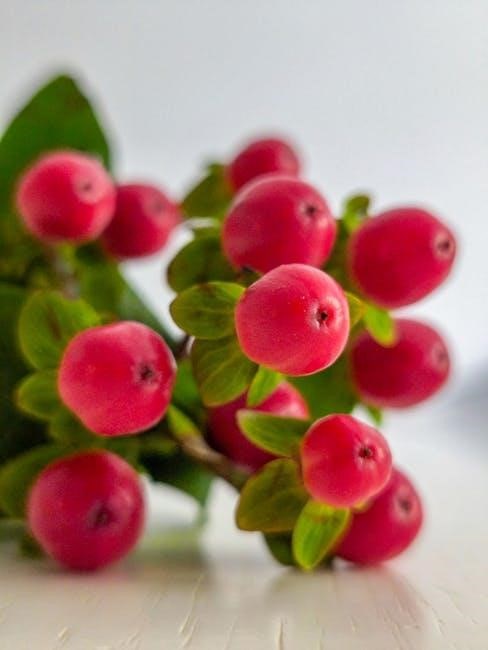The Garden Within, by Dr. Anita Phillips, explores emotional growth and personal development through the metaphor of gardening. It emphasizes nurturing inner peace and self-awareness, offering practical tools for mental well-being and resilience.
1.1. Definition and Concept of the Inner Garden
The inner garden represents a personal, metaphorical space for emotional and spiritual growth. It symbolizes a sanctuary where individuals nurture their thoughts, emotions, and inner peace. Drawing from Dr. Anita Phillips’ work, the concept emphasizes the therapeutic power of gardening as a reflection of self-care and mindfulness. This idea encourages individuals to cultivate resilience, much like tending to a physical garden, fostering a connection between mental well-being and the natural world.
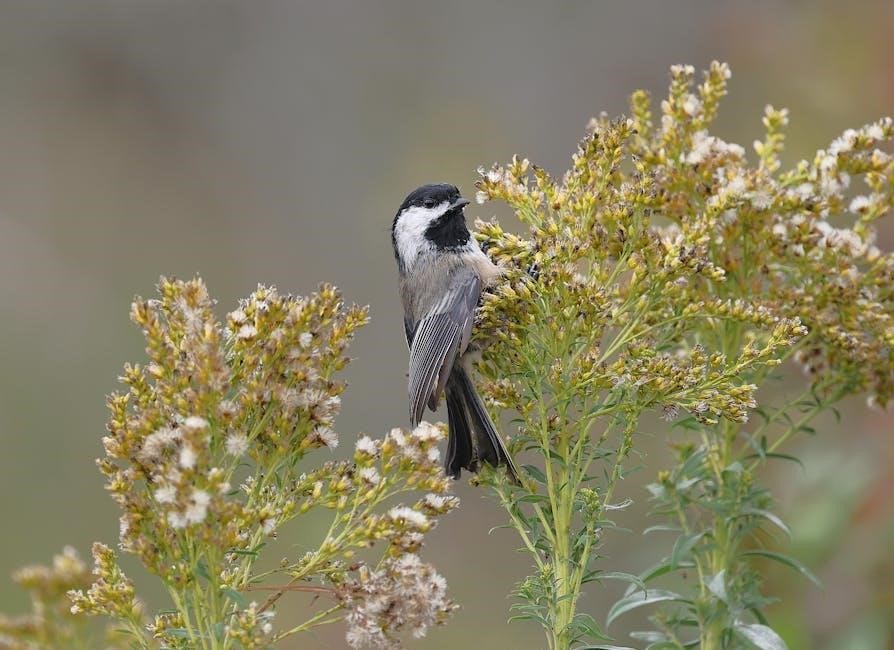
1.2. Historical and Cultural Significance of Inner Gardens
Inner gardens have deep roots in history and culture, serving as symbols of spiritual growth and tranquility. From ancient sanctuaries to modern therapeutic spaces, they represent harmony between nature and human consciousness. Across civilizations, gardens have been revered for their calming influence and role in fostering mindfulness. This enduring significance underscores their importance in emotional and mental well-being, as highlighted in Dr. Anita Phillips’ work, “The Garden Within,” where gardening becomes a metaphor for personal transformation and inner peace.
1.3. The Role of Nature in Personal Growth
Nature plays a profound role in personal growth by fostering emotional and mental well-being. It encourages self-awareness, mindfulness, and resilience. The calming effects of natural environments help individuals reconnect with their inner selves, promoting introspection and self-reflection. Through gardening and nurturing plants, people cultivate patience, discipline, and a deeper appreciation for life’s cycles. This connection to nature serves as a therapeutic tool, empowering individuals to embrace change and grow spiritually, as explored in “The Garden Within” as a pathway to inner harmony and self-discovery.
The Concept of the Inner Garden
The inner garden symbolizes a personal, introspective space for mental and emotional growth, representing balance, harmony, and the nurturing of one’s inner self.
2.1. Metaphorical Representation of the Inner Garden
The inner garden is a profound metaphor for the mind, soul, and personal growth. It symbolizes a space where thoughts, emotions, and desires are cultivated and nurtured. Just as a physical garden requires attention and care, the inner garden represents the effort to tend to one’s inner world. This metaphor highlights the journey of self-discovery, where challenges are weeds to be removed and positive traits are flowers to be nurtured. It embodies growth, transformation, and the potential for renewal.
2.2. Psychological and Emotional Benefits of Inner Gardening
Inner gardening offers profound psychological and emotional benefits, fostering calm and clarity. The act of nurturing plants mirrors self-care, promoting mindfulness and emotional balance. It reduces stress by providing a healthy distraction from daily pressures. Gardening also enhances creativity and self-esteem, offering a sense of accomplishment as life flourishes under your care. This therapeutic practice cultivates resilience, helping individuals cope with challenges while fostering a deeper connection to their inner selves and the natural world.
2.3. The Connection Between Mind and Nature
The connection between the mind and nature is profound, with inner gardening acting as a bridge to this relationship. Nature has a calming effect on the mind, reducing mental fatigue and enhancing cognitive clarity. Spending time in natural settings fosters a sense of balance and harmony, allowing individuals to reconnect with their inner selves. This inherent bond between humans and the environment promotes emotional well-being and a deeper appreciation for life, embodying the essence of the garden within.
The Mental Health Benefits of Gardening
Gardening offers profound mental health benefits, reducing stress, fostering mindfulness, and promoting emotional well-being. Nurturing plants and connecting with nature enhances mood and self-esteem, creating inner peace.
3.1. Stress Relief and Relaxation Through Gardening
Gardening serves as a powerful tool for stress relief, offering a calming escape from daily pressures. The act of nurturing plants and connecting with nature fosters relaxation, reducing cortisol levels. Physical activity in gardening promotes endorphins, improving mood and mental clarity. The serene environment of a garden provides a space for mindfulness, allowing individuals to unwind and recharge. This therapeutic process helps alleviate stress, fostering a sense of inner peace and renewal.
3.2. Gardening as a Tool for Mindfulness
Gardening is a profound practice for cultivating mindfulness, encouraging presence in the moment. The tactile experience of soil, the sight of growing plants, and the sounds of nature create a meditative environment. Focusing on tasks like planting or watering distracts from mental clutter, fostering calm. This mindful connection with nature helps reduce anxiety and promotes a sense of balance, teaching patience and the value of being fully engaged in the present.
3.3. The Impact of Gardening on Anxiety and Depression
Gardening has been shown to significantly alleviate symptoms of anxiety and depression by providing a calming escape from daily stress. The physical activity of planting and tending to plants releases endorphins, which improve mood and reduce anxiety. The sense of accomplishment from nurturing growth boosts self-esteem, while the connection to nature distracts from negative thoughts, fostering emotional stability. This therapeutic outlet offers solace and renewal for those struggling with mental health challenges.

Practical Tips for Creating Your Inner Garden
Transform your space by selecting plants suited to your environment and designing a serene layout for reflection. Regular maintenance fosters a therapeutic routine, promoting well-being and growth.
4.1. Choosing the Right Plants for Your Space
Selecting plants that thrive in your specific environment is crucial. Consider lighting, space, and climate when choosing species. Low-maintenance options like succulents or herbs are ideal for beginners. Incorporate plants with calming scents or vibrant colors to enhance the sensory experience. Native plants often require less care and blend seamlessly with local ecosystems. Ensure diversity to attract pollinators and create a balanced ecosystem. This thoughtful selection lays the foundation for a harmonious and flourishing inner garden.
4.2. Designing a Garden for Meditation and Reflection
Designing a garden for meditation and reflection involves creating a serene, calming space. Incorporate water features, like fountains or small ponds, to enhance tranquility. Use natural materials such as wood, stone, and gravel for pathways and seating areas. Consider circular or spiral designs to promote introspection. Shade-providing plants like bamboo or flowering trees can create a peaceful ambiance. Add focal points, such as statues or rocks, to guide the mind toward stillness. This thoughtful design fosters a space for deep contemplation and inner peace.
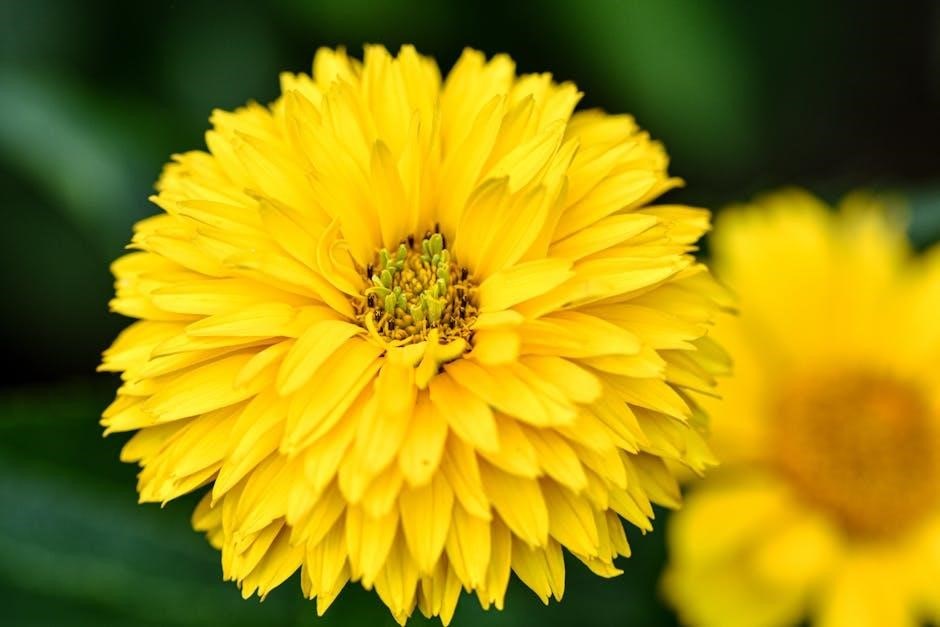
4.3. Maintaining Your Garden as a Therapeutic Routine
Maintaining your garden as a therapeutic routine fosters mental and emotional well-being. Regular tasks like watering, pruning, and observing growth create a sense of structure and purpose. The repetitive nature of these activities can be meditative, reducing stress and anxiety. Witnessing the cycle of life in your garden enhances self-esteem and gratitude. This practice cultivates patience, mindfulness, and a deeper connection to nature, promoting emotional and mental balance while fostering a calming, therapeutic environment.
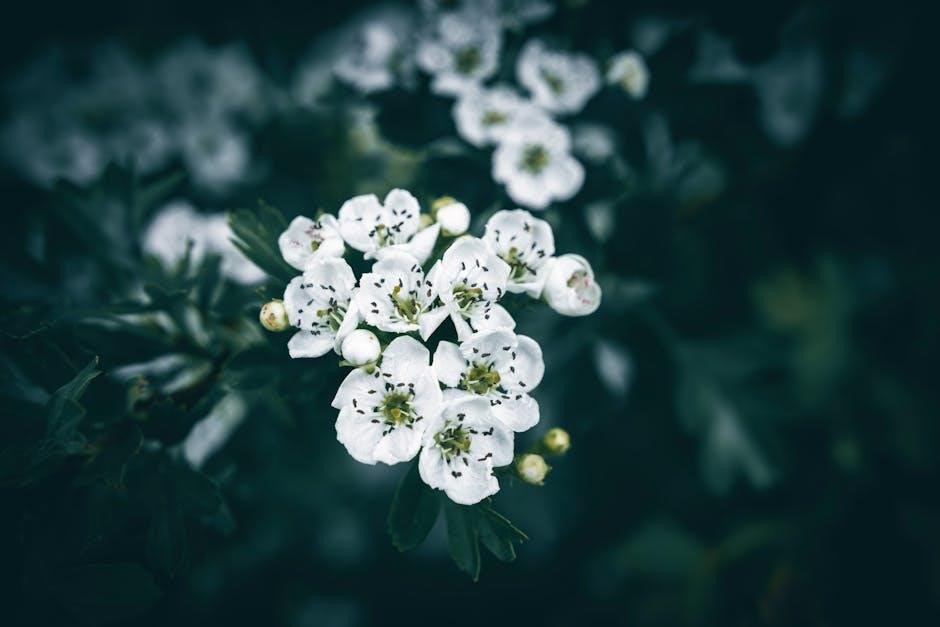
The Emotional Journey of Gardening
Gardening is a profound emotional journey, fostering personal growth, joy, and resilience. It transforms nurturing into a therapeutic process, offering fulfillment and emotional balance through nature.
5.1. The Joy of Nurturing and Growth
The act of nurturing plants evokes profound joy and fulfillment, mirroring the satisfaction of personal growth. Witnessing life flourish under your care fosters a deep emotional connection, enhancing well-being. The process of tending to plants teaches patience and responsibility, while the beauty of blooming flowers or ripening fruits brings immense delight. This nurturing journey becomes a therapeutic ritual, allowing individuals to express care and creativity, ultimately reflecting the harmony between nature and the human spirit.
5.2. Overcoming Setbacks and Learning from Failure
Gardening often involves setbacks, such as plant diseases or harsh weather, teaching valuable lessons in resilience. These challenges mirror life’s difficulties, encouraging adaptability and problem-solving. Embracing failure as a learning opportunity fosters growth and patience. Each setback becomes a stepping stone, refining skills and deepening the connection with nature. This journey of trial and error cultivates perseverance, transforming obstacles into opportunities for self-improvement and understanding the cycle of life and renewal within the inner garden.
5.3. The Sense of Accomplishment in Gardening
Gardening fosters a profound sense of accomplishment as one witnesses the transformation of seeds into thriving plants. The tangible results of nurturing life create a fulfilling experience, boosting self-esteem and confidence. Every bloom or harvest serves as a rewarding reminder of effort and patience. This satisfaction deepens emotional well-being, reinforcing the connection between care, growth, and personal achievement, allowing gardeners to take pride in their role as creators and stewards of their inner garden.
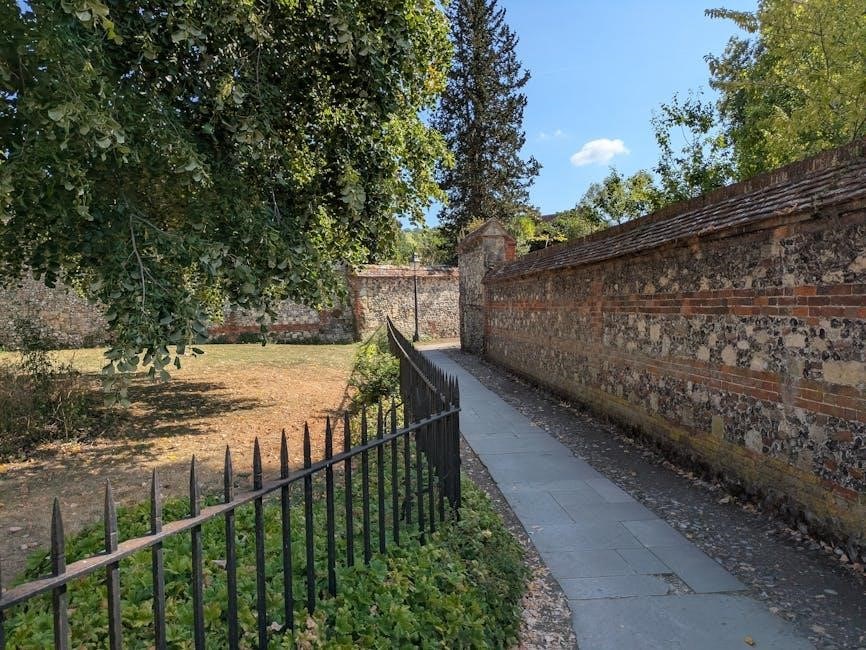
The Role of the Inner Garden in Community Building
Inner gardens foster connections by creating shared spaces for collaboration and collective growth, strengthening community bonds through shared responsibility and mutual support, uniting neighborhoods.
6.1. Community Gardens and Social Connections
Community gardens are vibrant spaces that cultivate more than just plants—they nurture social connections. By bringing people together physically, they provide opportunities for individuals from diverse backgrounds to share knowledge, collaborate, and support one another. These interactions foster a sense of belonging and cooperation, strengthening community bonds and creating a foundation for meaningful relationships among gardeners. In this way, community gardens serve as essential hubs for building and sustaining connected, resilient neighborhoods.
6.2. Sharing Knowledge and Resources in Gardening
Sharing knowledge and resources in gardening fosters collaboration and mutual growth within communities. Gardeners exchange tips on plant care, soil preparation, and pest management, creating a supportive environment for learning; Tools, seeds, and expertise are often shared freely, reducing costs and enhancing productivity. This collective approach not only strengthens gardening skills but also builds trust and camaraderie, promoting a culture of generosity and shared success among participants. It empowers individuals to grow confidently and sustainably.
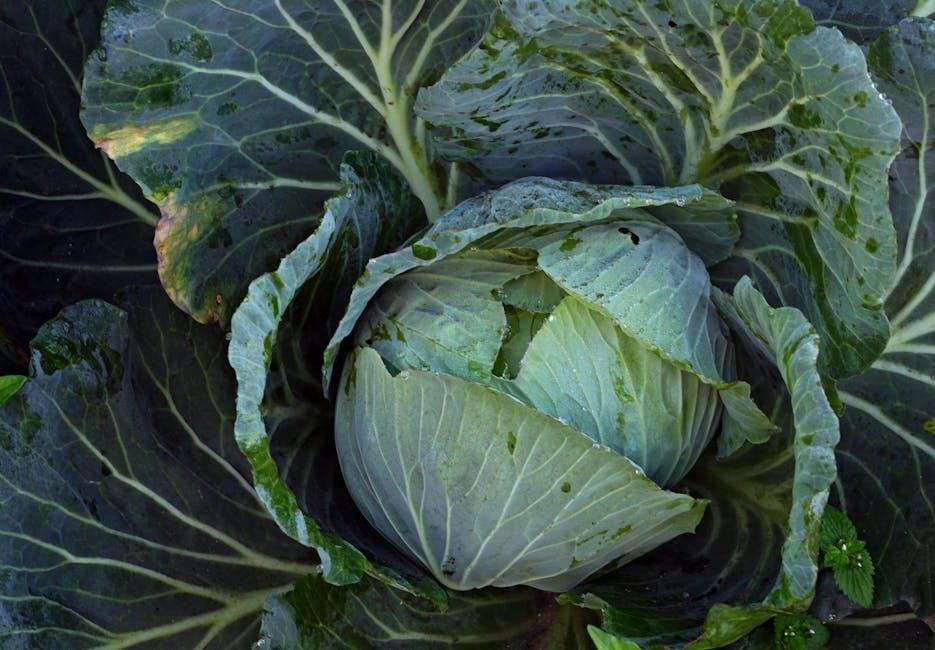
6.3. The Impact of Collective Gardening on Neighborhoods
Collective gardening transforms neighborhoods by fostering a sense of unity and shared purpose. It enhances local aesthetics, turning vacant spaces into vibrant green areas. Neighborhoods benefit from improved air quality, reduced urban heat, and increased biodiversity. These gardens also serve as hubs for social interaction, strengthening community bonds and fostering a collective sense of pride. By growing food together, residents promote sustainability and food security, creating lasting positive change in their environment and relationships.

The Spiritual Dimension of the Inner Garden
The inner garden represents a sacred space for reflection, mindfulness, and spiritual renewal. It mirrors the soul’s journey, fostering growth, harmony, and connection to nature’s divine essence.
7.1. The Garden as a Sacred Space
The garden serves as a sacred space, offering tranquility and spiritual renewal. It symbolizes harmony between nature and humanity, fostering mindfulness and inner peace. Elements like water, trees, and vibrant plants create a serene atmosphere, encouraging meditation and reflection. This space becomes a sanctuary where individuals can connect with their spirituality, find solace, and experience the divine through nature’s beauty and simplicity. The garden’s sacredness lies in its ability to inspire introspection and holistic well-being.
7.2. Spirituality and the Healing Power of Nature
Nature has long been a source of spiritual renewal, offering healing and emotional restoration. The garden, as a natural sanctuary, fosters a deep connection to the divine, promoting mindfulness and inner balance. Spending time in nature has been shown to reduce stress, uplift the spirit, and inspire self-reflection. This profound relationship between spirituality and nature creates a restorative environment where individuals can find peace, rejuvenate their souls, and reconnect with their true selves through the beauty and tranquility of the natural world.
7.3. The Garden as a Symbol of Spiritual Growth
The garden serves as a powerful metaphor for spiritual growth, reflecting the journey of the soul. Just as seeds sprout, grow, and flourish with care, so too does the spirit evolve through nurturing and dedication. The cyclical nature of seasons mirrors life’s ups and downs, teaching resilience and patience. Tending to the garden becomes a sacred practice, symbolizing self-cultivation, renewal, and the pursuit of harmony with oneself and the universe, fostering a deeper understanding of spiritual transformation.
The Garden Within: A Metaphor for Life
Life, like a garden, embodies growth, decay, and renewal. Nurturing inner strength, embracing challenges, and finding harmony within reflects the cyclical journey of self-discovery and transformation.
8.1. The Garden as a Reflection of Personal Life
The garden mirrors life’s journey, with its cycles of growth, decay, and renewal. Just as plants require care and patience, personal growth demands dedication and resilience. Challenges like pests or harsh weather parallel life’s obstacles, teaching adaptability. The garden’s beauty reflects the effort invested, much like how personal achievements stem from perseverance. This symbiosis highlights the profound connection between nurturing a garden and cultivating one’s inner self, revealing life’s intricate dance of care, transformation, and flourishing.
8.2. The Process of Growth and Transformation
The journey of growth in a garden mirrors personal transformation. A seed’s journey from germination to bloom symbolizes self-evolution—nurtured by patience, effort, and time. Challenges like pruning or weathering storms reflect life’s obstacles, teaching resilience. Growth in the garden, like in life, is gradual, requiring consistent care. This process fosters self-awareness, revealing how transformation is both beautiful and necessary for flourishing. It reminds us that growth is a continuous, ever-evolving path toward becoming our fullest selves.
8.3. The Garden as a Symbol of Resilience
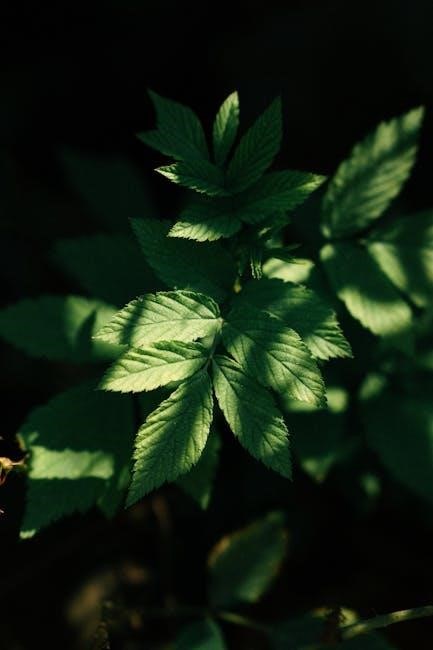
The garden embodies resilience, thriving despite challenges like harsh weather or pests. Its ability to recover and flourish symbolizes strength and adaptability. Life mirrors this journey, as individuals face setbacks but grow stronger. The garden teaches perseverance, reminding us that beauty and growth emerge from adversity. Its resilience inspires hope, showing that even in difficult times, renewal and vitality are possible. This enduring spirit reflects the human capacity to overcome and flourish.
The Future of Inner Gardening
Inner gardening’s future lies in urban innovation, sustainable practices, and technology integration, fostering deeper connections with nature and self, ensuring its timeless relevance and growth.
9.1. Innovations in Urban Gardening
Urban gardening is evolving through innovative solutions like vertical gardens, hydroponics, and smart gardening tools. These advancements enable efficient space utilization and sustainable practices, making inner gardens more accessible in cities. IoT sensors now monitor soil and light conditions, optimizing plant care. Community-driven projects, such as shared green spaces and rooftop gardens, foster collaboration and environmental awareness. These innovations not only enhance urban aesthetics but also promote mental well-being and sustainability for future generations.
9.2. The Role of Technology in Modern Gardening
Technology is revolutionizing modern gardening by enhancing efficiency and accessibility; Smart devices, such as soil sensors and automated watering systems, optimize plant care. Apps provide personalized advice, while LED grow lights enable year-round indoor gardening. Additionally, technology fosters a sense of community through online platforms where gardeners share tips and resources. These advancements make gardening more approachable, ensuring that anyone can nurture their inner garden, regardless of space or expertise, while promoting sustainability and mental well-being.
9.3. The Growing Popularity of Inner Gardening
Inner gardening is gaining popularity as people seek solace in nature and self-sufficiency. Urbanization has sparked a desire for green spaces, with many embracing indoor and small-space gardening. The mental health benefits, combined with the joy of nurturing life, resonate deeply. This trend reflects a broader shift toward sustainability and holistic well-being, making inner gardens a symbol of resilience and harmony in modern life.
Cultivating the inner garden empowers personal growth, resilience, and joy, fostering a deeper connection with nature and oneself, leaving a lasting, fulfilling legacy.
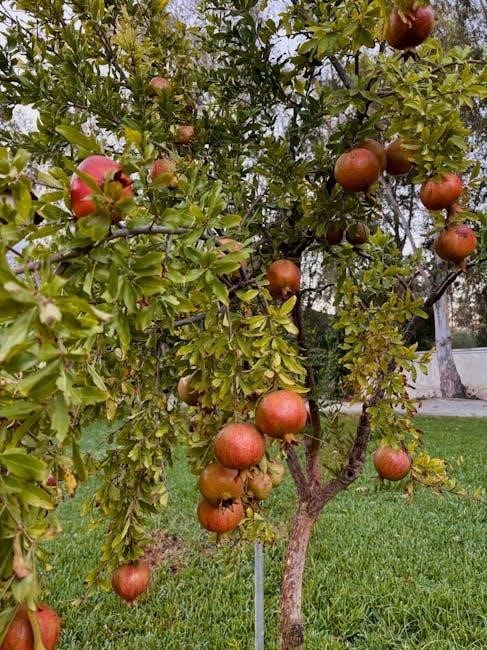
10.1. The Lasting Impact of the Inner Garden
Nurturing the inner garden fosters profound personal transformation, emotional balance, and spiritual renewal. Its lasting impact lies in its ability to cultivate resilience, mindfulness, and a deeper connection to nature. As a sanctuary for the soul, it becomes a symbol of growth and renewal, inspiring continuous selfcare and harmony in daily life. The inner garden’s influence extends beyond the individual, creating a ripple effect that enriches communities and future generations, leaving a legacy of peace and fulfillment.
10.2. Encouragement to Start Your Own Inner Garden Journey
Embrace the transformative power of the inner garden by taking the first step today. Whether through a small plant or a mindful moment, cultivating your inner garden is a journey of self-discovery and healing. It’s an accessible path to peace, growth, and connection with nature. Start small, stay consistent, and allow your garden to flourish alongside you, nurturing your soul and enriching your life in profound ways.
